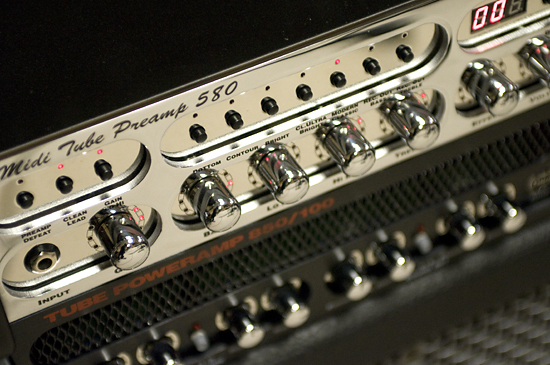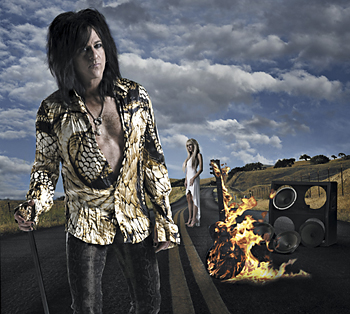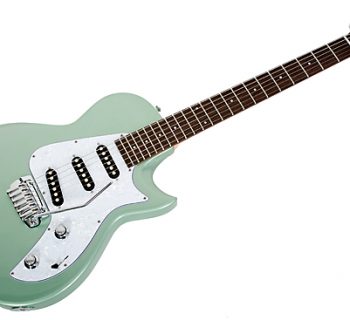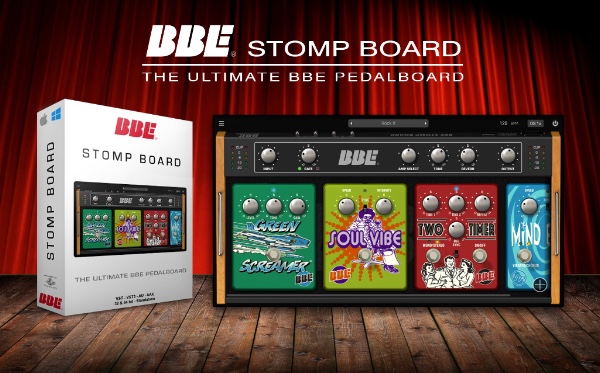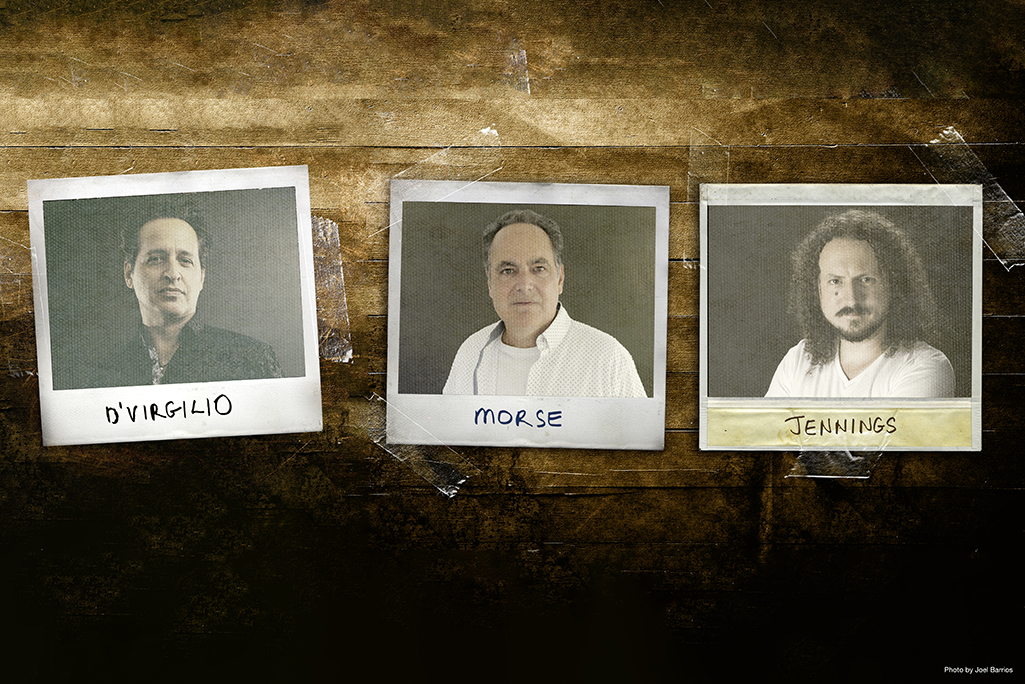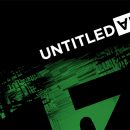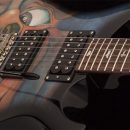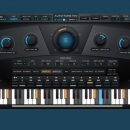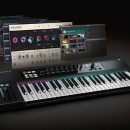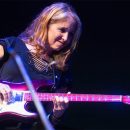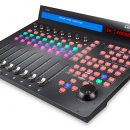Nice rack! Those two little words are sure to bring a smile to many of our guitar playing readers, and not just the guys. We’re of course talking about rack-mounted MIDI-controllable gear for the serious guitarist, and if your rack should happen to contain the tube-driven sonic powerhouse delivered by Germany’s ENGL Amplification, that rack is indeed nice. In fact, it’s far beyond nice — the combination of E580 tube preamp and E850 stereo tube power amp deliver some of the most versatile and beautiful guitar tones we’ve had the pleasure of hearing. This rig would be perfectly at home with players across the broadest range of musical styles from blues to country to pop to classic rock to modern metal.
| Category | Value | Rating | ||||
| Features | 20% |
|
||||
| Usability | 25% |
|
||||
| Sound | 25% |
|
||||
| Documentation & Support |
10% |
|
||||
| Price | 20% |
|
||||
| OVERALL RATINGS: E580 MIDI Tube Preamp = 3.4. Power Amp E850/100 = 3.5. 3.6 stars or better: Outstanding, WIHO Award 3 stars or better: Worth considering 2 stars or better: Suited to specific needs 1 star or less: Not recommended |
||||||
Sure, there are those who love their small combos and others who can see no substitute for a traditional half stack, but for guitar players craving maximum tonal variety with easy access to that variety, rack systems can’t be beat. And ENGL, one of Germany’s finest amp builders, has been making rack gear and MIDI-controllable amps for many years.
The MIDI Tube Preamp E580 and Tube Poweramp E850/100 make a formidable pair, containing features that blow the doors off of almost any head you can buy today. With storage for up to 256 of your own sound presets and an all-tube preamp section that features multiple voicing options, not only did the E580 deliver a tremendous range of tones, but it had more than enough memory locations to store all of our favorite sounds.
We were blown away by what we can only describe as the ENGL Clean sound — so crisp and shiny you’d think you plugged straight into a studio mixing board. And the range of overdriven, fuzz, and full-on distortion tones was truly inspiring, too. While the overdriven tones were reflective of certain other popular amps, ENGL amps really speak with a voice of their own. As American musicians get more and more familiar with these hot European exports, you’ll start to hear a lot more people talking about the ENGL tone, which may be right up there in a recognizable tone category alongside Marshall, Fender, VOX, and Mesa/Boogie, each of whom have some specific tones commonly associated with them.
The E850/100 might just be our favorite two-space, rack-mounted tube power amp from any manufacturer. It contains many useful features absent from most of the competition, like dual channels that each feature two foot-switchable, independent settings for volume, bass (Depth), and presence.
With great power comes… a boutique price tag! The US dollar trails in value behind the Euro, so purchasing this rig will set Americans back significantly more money that some comparable gear made elsewhere. If you can afford it, though, you’ll earn serious bragging rights when you put this hot European import to work in your rack, and with all the great tone it delivers, you’ll probably be able to sell a bunch of your other amps that will undoubtedly begin to collect dust.
Features
 MIDI Tube Preamp E580
MIDI Tube Preamp E580
You can’t help but be wowed by the hot looks of this two-space preamp — a reflective mirrored finish adorns the face, and bright red LEDs surround its chrome-plated knobs. The real beauty, however, is in what lies beneath the flashy exterior.
Three ECC83 preamp tubes (similar to 12AX7) fuel the tone circuits, while a fourth is utilized by a tube-buffered stereo effects loop (mono send, stereo return).
Multiple voicings enable the creation of a diverse range of tones, selected via buttons that run across the preamp’s face above the knobs:
- Clean/Lead: this button selects between two of the voice structures.
- Gain Lo/Hi: this button selects between different levels of saturation.
The four possible combinations of these settings deliver different sounds simply described as clean, crunch, soft lead, and heavy lead tones. Each gain structure overlaps just a bit, too, so for example turning up the gain on the Clean voicing introduces some soft clipping and light distortion, while the Lead voicing takes that gain and runs it up to a significantly hotter level. There are differences in the frequency response and dynamics of each mode, too, so the sonic results can range from subtle to significantly different.
There is far more to shaping your sound than these four modes provide, however. The E580 has a passive four-band EQ section that includes Bass, Treble, and both Lo and Hi mids. Besides splitting up the midrange frequencies, a few additional buttons further enable you to radically change your tone:
- The Bottom button boosts low-end frequencies, and is useful for helping a single-coil guitar to sound fuller and heavier.
- The Contour button changes the range of frequencies affected by the Lo Mid knob. When Off, the knob affects the 300 Hz range, and when On, the Lo Mid knob affects the 500 Hz range.
- The Bright button, as you might expect, boosts upper frequencies.
- The Ultra Bright button only affects sounds on the Clean voicing, and further shapes the high-end frequency response of your guitar tone.
- The Modern/Classic button makes a significant different in tone from the preamp — it switches between two distinctly different voicings within the preamp.
All of the knobs (rotary encoders, technically speaking) on the E580 provide digital control of the analog preamp inside. Red LEDs indicate the position of each knob, and two adjacent LEDs illuminate when selecting in-between positions, while numeric values shows up on the amp’s three-digit display while rotating the knobs.
Volume and effects loop level are set on an individual preset basis, and turning the parallel loop’s Effect knob fully to a max value of 21 runs the loop at 100% wet in series. A separate Master knob controls the overall output volume for the preamp, and its setting is not stored with individual presets. This design makes it easy to match or balance the levels of your various clean and dirty, dry and effected presets with each other (using their individual Volume settings) and then use the Master control for overall output level to your power amp.
Presets can bet stored in two banks of sounds, each holding up to 128 presets. In addition to these memory locations, ENGL preprogrammed forty factory presets covering a wide range of sounds and styles, saved to a permanent internal location.
We love that the master volume is controllable via a MIDI continuous controller (CC #7). By using your MIDI foot controller to adjust volume, this gives you volume pedal functionality within the preamp itself and without having to insert an analog pedal into your signal path between the guitar and your preamp.
But wait… there’s more! ENGL provides frequency compensated outputs to send your guitar signal straight to a PA system or mixing board. These outputs are designed to simulate a 4x12 cabinet, and while a dedicated output level control on the rear is nothing out of the ordinary, on the front of the amp are two additional buttons that provide a Bass or Treble boost to these outputs. As with the main audio outputs to your power amp, the cabinet simulated outputs also provide stereo output, but these connect to a console via balanced XLR cables. Note that the frequency compensated output connectors on the rear of the E580 are male XLR jacks, so your typical mic cables will need a gender change adaptor to interface with a mixer.
The E580 provides guitar inputs on the front and back, with the front jacks taking priority. We love this arrangement especially for players with wireless rigs since your rack-mounted wireless receiver (or other gear, like switching systems) can connect via the rear of the E580, but when you’re in your smaller studio or rehearsal space, you can plug an instrument cable straight into the front and that connection takes over automatically.
A preamp Bypass switch on the front lets you bypass all of the preamp circuitry in the E580, useful if you want to incorporate the E580 into a rig with other guitar preamps. Because you can save the preamp Bypass setting on a per-preset basis, it’s easy to integrate the E580 into a very complex rig. The Bypass setting doesn’t specifically bypass the effects loop, so if you have effects processors or pedals in the loop, you can store a preset that bypasses the preamp, but still passes your guitar signal through to the effects loop.
The MIDI In jack provides phantom power across a standard DIN-5 cable. ENGL uses a standard DIN-5 arrangement on their own MIDI foot controllers, but most third party controllers these days use a DIN-7 connector. If you want to power your third-party foot controller, as long as the power requirements match up, we’ve seen some custom DIN-5-to-DIN-7 adapter cables on the market.
The E580 ships with a Windows-based software editor, too. This provides a visual way to edit sounds (though it’s simple enough from the amp, as you’ll read in Usability), not to mention a way to back up your sound presets. Unfortunately, the computer interface is an old DB-9 serial connection. For most musicians today, odds are good that you no longer have a serial port on your PC (particularly on laptops). We would suggest that ENGL replace this interface with a standard USB connector, and while we’re at it, we would also suggest that there needs to be a Macintosh-based editor, too, but really, the E580 is one product where we don’t really see the need for a software-based editor at all (and we’re big on software-based editors for a lot of other rack gear).
 Tube Poweramp E850/100
Tube Poweramp E850/100
The ENGL Tube Poweramp E850/100 is an all-tube, stereo power amp that delivers 100 Watts of power to each side at 16 ohms (plus it also drives 8 ohm and 4 ohm cabinets).
The E850 boasts three ECC83 preamp tubes and eight 6L6GC power tubes. One of the unique aspects of this power amp is that each channel provides two sets of controls for volume as well as two sets of controls for EQ: both Presence and Depth (an additional low frequency EQ control).
One footswitch can be used to toggle between Volume A and Volume B, while another footswitch can select between your two EQ settings. Since both the Presence and Depth controls can significantly alter your tone, this gives the E850 more sonic flexibility than any dedicated power amp we’ve come across so far — it’s really a two-channel power amp that also happens to run in stereo! And because a standard stereo ¼” jack provides the switching functionality, if you have a switching system in your rig, you can easily program selection of power amp settings on a per-preset basis along with your preamp.
A ground-lift switch on the rear makes it easy to eliminate hum from your rig should you encounter a club setting whose wiring adds a new element of noise to your rig that you’d rather not hear. We trust you to have your rig wired properly to avoid ground loops in the first place, though!
Some users may lament the fact that this power amp doesn’t offer an EL-34 option, though we’re perfectly happy with a 6L6 power plant in our rigs. However, replacing tubes will require re-biasing the amp — there’s no provision for a “standard” 6L6 replacement as found with a few other companies’ power amps.
Usability
MIDI Tube Preamp E580
At first glance, all those knobs and buttons may seem a bit intimidating, but operation of the E580 preamp was very straightforward. The knobs for setting levels of gain, equalization, effects loop level, etc. are rotary encoders that can turn 360 degrees endlessly, and LEDs show their approximate settings. For in-between settings on the dials, two adjacent LEDs illuminate, and an exact value appears on the three-digit display while knobs are in motion.
We appreciated the encoders because when a new preset was selected, the knobs were instantly at their stored values so we could immediately make direct adjustments to our sound. With amps that have traditional mechanical knobs and memory, when a sound preset is selected, you have no idea what the knob value actually is, and you have to adjust it throughout its range to find where it was set in order to make adjustments.
We connected a Roland FC-200 MIDI foot controller to the E580 and it worked perfectly from the start. In fact, the FC-200’s continuous controller was already set to a CC value of 7, so we didn’t even have to reconfigure anything to have control over the master volume on the preamp.
Presets are arranged into two banks of 128 storage locations each. While this sounds like far more sounds than you’d ever want to save in an amp, ENGL added some great usability to bring usefulness to all of this sound storage. Bank A and Bank B can be set to independent MIDI channels, and if you routinely play in different settings or with different rig configurations, you could have your primary sounds in Bank A, and in Bank B store a copy of those same sounds with slightly altered settings.
For example, for large stages, Bank A might contain the sounds you play through your 4x12 cabinet, but in Bank B, you save almost-identical sounds with more emphasis on the Bass for use with your 2x12 on smaller gigs. Or perhaps Bank B has your sounds tweaked for studio use. By mirroring the same preset numbers in each bank, all you have to do is change a MIDI channel on your foot controller to access sounds in the other bank, but yet still know that your lead and rhythm tones are still in all the same numeric places that match up with your effects.
When sitting close to the preamp during testing, we were able to detect an audible click when lowering our volume pedal all the way down to a value of 1, which was very quiet but not completely muted (for that you must put your power amp into Standby mode).
While the reflective finish on the preamp looks killer under stage lighting, we did find it hard to read the black lettering on the controls at times, or to see the black indents on the ends of the knobs. Fortunately, setting the controls was easily achieved by looking at the red LEDs surrounding the knobs, too. One of the beautiful things about knowing the numeric settings for all the controls is that it’s very easy to share favorite sounds with other players. You can tell them exactly what settings to dial into their preamp.
The combination of buttons for changing amp voicings, and knobs for typical guitar amp settings, made dialing in sounds a simple affair. It was very easy to balance volume across different presets since their individual volumes could be saved on a per-preset basis. The E580 also had features that made it easy for us to copy presets from one memory location to another.
Speaking of presets, at first we almost didn’t notice the forty factory presets since they were located in memory “below” A-01, but using the Up and Down arrows to navigate presets, we had easy access to them, and it was very easy to copy favorite presets into other memory locations where we could save our changes to them.
The frequency compensated output had its own level control on the rear, which made it easy for us to set a level going to our recording console, but then we could still freely adjust the master volume on the amp for our own listening purposes through our power amp and speaker cabinet.
Tube Poweramp E850/100
Power amps tend to be pretty easy to use, and the E850 is certainly no exception, even with the extra goodies it provides.
Sporting sturdy switches for power and standy (nicely marked with white labels on the top edge of the switches, the E850 also featured a series of knobs for Volume, Presence, and Depth on each channel — two sets each!
It was easy to set Volume A different from Volume B in order to make one setting a useful Solo/Boost feature, and we were able to set Depth A and Presence A independently of Depth B and Presence B. This flexibility really added to the variety of tones were were able to generate from the E580 preamp, or any other preamp you might choose to pair with it.
The rear sported speaker connections for 16-, 8-, and 4-ohm cabinets in various mono or stereo configurations, and a ground lift switch made it easy to eliminate ground loop noise had we experienced any.
Access to the tubes requires opening the case — a very quiet fan kept the internally-mounted tubes cool throughout use.
Sound
 The combination of E580 preamp with E850/100 power amp creates a winning combination that yields fantastic tone, sure to please a very diverse range of guitar players.
The combination of E580 preamp with E850/100 power amp creates a winning combination that yields fantastic tone, sure to please a very diverse range of guitar players.
We tested the ENGL rack system with both an ENGL E212VH 2x12 cabinet and a Mesa/Boogie Rectifier Traditional 4x12 cab, each loaded with Celestion V30 speakers. We played an assortment of guitars from Music Man, Fender, and Ibanez, with humbucker, single coil, and piezo pickups.
The ENGL Clean sound is really something to behold, or behear as it were (if only such a word actually existed). We were able to dial in clean tones so crisp and so clear that we thought we were listing to a guitar plugged straight into a mixing board. In fact, we’ve never heard a clean tone from an electric guitar tube amp so ideally suited to use with a piezo pickup-equipped electric guitar without a DI box.
When we used traditional single coil and humbucking pickups, we got fantastic country twang finger-picking tones that would be welcome in Nashville as long as the producer or record label guy didn’t look in the amp room and ask “what’s that flashy, colored amp thingy over there?” We got plenty of soulful funky rhythm pop tones that would be at home in Top 40 session work or in your retro chic disco band, too.
With the Clean/Lo setting, our tone was clean through most of the range, and we were able to generate a range of useful, creamy and warm clean tones. When cranking the Gain into the 3-5 PM range (values in the 13-21 range), the ENGL rig delivered a soft, classic overdrive tone.
The Clean/Hi setting took over where that soft overdrive left off, adding real drive to the signal and enabling us to get some very classic Marshall-esque tone, albeit with much less noise than is typical for those amps. Many inspired Led Zeppelin and Van Halen riffs were generated as a result depending on just how much gain and bottom end we applied to the sound, and whether or not we were playing in Modern or Classic mode.
By today’s standards, the Lead/Lo channel voicing combination delivered tones we place in the mid-gain part of the overall guitar amp tone spectrum, and the tone here shifted a bit more in the Mesa/Boogie direction than the Marshall character we heard previously. It generated sweet, melodic harmonics that were easily controlled, and with the gain at a high setting, this tone was infinitely useful in heavy rock situations. Lower gain settings resulted in great blues tones, especially when the Modern/Classic switch was in the Classic setting.
The Lead/Hi setting provided a high-gain assault that to our ears almost sounded like a Boogie Mark IV blended with the new EVH 5150 III’s wild third channel. Harmonics were easily excited – just look at your humbucker-loaded guitar and it practically screams at you! At high gain levels, this channel delivers all the bite and aggression that metal players need, and the amp delivered a very tight and fast attack characteristic necessary for fast 16th and 32nd note rhythms.
Playing chords through heavy gain sounds yielded reasonably pleasing results. We were able to hear note separation pretty well, and while not as clearly defined as we’ve heard in a handful of high-end amps, the sound was still clean enough for prog rockers playing complex chord voicings and arpeggios.
The Modern/Classic switch really impacted our tone, and while there’s certainly a bit of midrange scooping happening in the Modern mode, it felt like this switch also impacted the sag or feel of the amp, helping to alter its performance response from a little softer and looser to more immediate in its response.
Adding to the versatility of this amp, it was easy to push the channels in musical ways not quite expected. When we ran the Lead/Hi setting with the Modern mode, Bottom contour In, and a low Gain setting, we got beautiful woody tones that evoked a great ‘70s vibe.
Another sound we loved was found by using the Clean/Lo setting on Modern with the Gain cranked. This resulted in vintage fuzz tones that screamed Beatles!
By using the Contour switch and spending time paying attention to how we tweaked the Lo Mid and Hi Mid settings, we were able to really alter the kinds of tone we got from the ENGL rig.
Altering the Presence and Depth settings on the E850/100 power amp made a huge difference in our tone as well. Higher Depth settings really enhanced the low end of our tone in a way that made some of our Lead/Hi tones almost enter the sonic territory reserved by our favorite tube-rectification-based amps.
ENGL’s 2x12 Pro horizontal cabinet delivered a big, tight sound with lots of roundness and depth. We found it to be one of the larger sounding 2x12 cabinets that we’ve used, despite its compact size, delivering a sound that had the projection of a 4x12 but with the immediacy of a 2x12. We were also pleased by the sound of the ENGL rig through our Boogie 4x12, but the ENGL cabinet had the advantage of delivering stereo output at the flick of a switch on the rear jack plate.
Using the frequency compensated outputs was a nice bonus, but not something we’d specifically race to make use of. By historic standards, it delivers a decent cabinet simulated output if you find yourself playing a small bar gig, but compared with today’s modeled amp simulators, the tone was a little bit more sterile than you can get for direct recording purposes. And after listening to the ENGL rig in its entirety, taking away the depth of tone and presence delivered by the E850/100 power amp just felt like cruel and unusual punishment. The tone was usable — and vastly superior to some other built-in simulators we’ve heard, but it paled by comparison to the tone delivered by the full tube amp power section.
While some amps seem to have very specific sweet spots where they sound best, we found the E580/E850 combination to be extremely musical sounding through a wide range of different tone settings. It covered a lot of musical territory, and did a great job in each of them.
Documentation and Product Support
ENGL documentation rivals the best from other amplifier manufacturers. Both the preamp and power amp came with extensive documentation that fully explained use of their features.
Further, the manuals were filled with tips from ENGL amp designer Horst Langer, schematics for the internal circuitry and wiring options, and a full description of the forty presets that the design team created for the E580.
Price
The MIDI Tube Preamp E580 (MSRP $3,499) sells for $2,974. While it delivers an astonishing amount of flexibility and great tone, the most direct competitor we’ve experienced in a rack-mounted, MIDI-controllable tube preamp can be had for over $1,000 less (and, ironically, probably sells for a similarly inflated price when sold through a European distributor).
The Tube Poweramp E850/100 (MSRP $2,616) sells for $2,218. While we wouldn’t hesitate to put the E580 into our rig once we sold off a spare kidney or family member, the price of the power amp is high enough that we’d have to consider alternatives. There are numerous options in the USA that sell for significantly less, though none feature the dual-channel capabilities found here.
The ENGL 212 Pro cabinet (MSRP $909) sells for $772 street, which is a fair price (but not part of the ratings for this review).
It should be noted that ENGL’s other amp products — heads and combos, sell in the USA at price points that more directly compare with equivalent offerings in the pro market. Despite their boutique status, it just seems like the rack gear prices need to be adjusted (price) to better reflect the current marketplace in which tube-based rack gear hasn’t yet regained the popularity that it had back in the late ‘80s. Either that or the US economy just needs to get better so we can afford some of this great gear!
Contact Information
ENGL
www.engl-amps.com
Evaluation Short-List
Mesa/Boogie Triaxis preamp and Stereo Simul-class 2: Ninety power amp
Randall RM4 modular preamp and RT2/50 power amp
Egnator M4 preamp
VHT Two/Ninety/Two power amp

